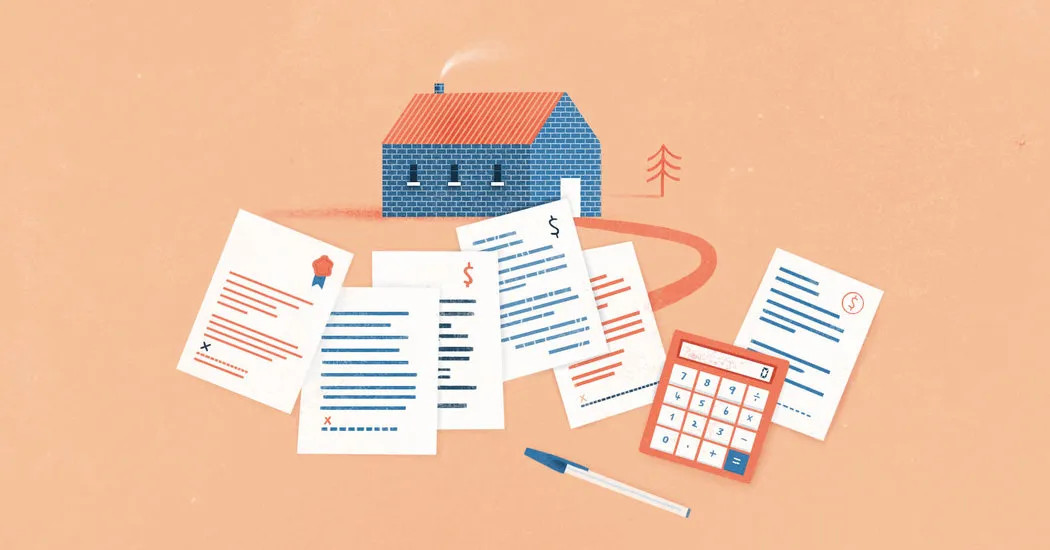You are viewing our site as an Agent, Switch Your View:
Agent | Broker Reset Filters to Default Back to ListA Newly Built Home Sounds Great. But Ballooning Borrowing Costs Could Crush New Home Buyers
June 05 2022
 Over time, more than half of homebuyers would prefer to buy a newly-built home over an existing home. More than 10% of U.S. home purchases are from buyers of new homes. In many ways, that's no surprise, as new homes can be specified for buyer preferences, are extra clean, energy efficient, require less maintenance, and are move-in ready at the time of purchase.
Over time, more than half of homebuyers would prefer to buy a newly-built home over an existing home. More than 10% of U.S. home purchases are from buyers of new homes. In many ways, that's no surprise, as new homes can be specified for buyer preferences, are extra clean, energy efficient, require less maintenance, and are move-in ready at the time of purchase.
But right now, the market for newly built homes has never been trickier. It's not just difficult to build or buy a new home – agreeing to an offer on a new home could be a financial risk your clients can't afford.
Learn why borrowing costs are skyrocketing and what your buyers should consider when deciding whether to agree to a contract on a new home.
Why Are Borrowing Costs Rising?
The costs of borrowing for a home loan are surging because interest and mortgage rates are rising at their fastest clip in decades.
In fact, the current average mortgage rate on a 30-year fixed-rate mortgage is 5.7%. For much of 2020 and 2021, the 30-year fixed-rate mortgage sat below 3%. Because of persistent inflation and the Federal Reserve's commitment to hiking interest rates throughout 2022, mortgage rates are primed to increase more this year.
For borrowers, this is tough news. The rise in mortgage rates means hundreds of dollars more in monthly home loan payments, which can add up to tens or even hundreds of thousands more dollars spent over the course of the loan.
Why Are Buyers of Newly Built Homes Vulnerable to Mortgage Rate Increases?
Mortgage rate increases are difficult for all homebuyers. But buyers of newly built homes pay the heftiest financial price when mortgage rates rise.
Traditionally, new home buyers sign a contract and pay a deposit several months before their home is ready. The time between signing a contract and moving into a new home has recently expanded even further – sometimes by up to a full year – due to lingering supply chain issues and building delays. Buyers of existing homes, on the other hand, typically sign a contract and pay a deposit shortly before their deal closes.
This means that the risk of being burned by rising interest rates is especially acute for new home buyers. Just consider a buyer who paid a deposit on a new home last summer, with the expectation of moving in by June 2022. A year ago, that buyer's loan estimate had an interest rate under 3%. Now, mortgage rates are well above 5%, meaning that monthly mortgage payments will be hundreds of dollars higher than initially anticipated. And walking away from the deal is an unappetizing option – usually, buyers who do so sacrifice their initial deposit.
How Can Buyers of New Homes Approach Rising Interest Rates?
Clearly, agreeing to a contract on a newly built home involves an element of risk. But buyers – including your clients – can explore strategies that insulate them from further mortgage rate hikes and increased borrowing costs.
The most common tactic to blunt the effects of rising interest rates is agreeing to a mortgage rate lock. With a mortgage rate lock, buyers lock in a specific mortgage rate, in exchange for what is usually a few hundred dollar fee.
Mortgage rate locks usually come in 30, 45, or 90 day increments, but buyers can also agree to nine-month or 12-month rate locks if they agree to a price above the current 30-year fixed interest rate.
For buyers of newly-built homes, a longer rate lock may make sense. Since mortgage rates are expected to be much higher in six months or a year, agreeing to a longer-term rate lock can save borrowers tens of thousands dollars over the course of a home loan.
In addition, new home buyers can navigate interest rate hikes by considering an adjustable-rate mortgage (ARM), or purchasing discount points on their mortgage.
An ARM offers buyers an initial five, seven, or 10-year rate that's significantly lower than a standard 30-year mortgage. In return, buyers agree to pay a much higher interest rate once this "teaser" rate expires.
ARMs generally make the most sense for buyers who plan to sell their home within the span of their "teaser" period. If your clients are purchasing a newly-built starter home, or are convinced they will be able to refinance their rate in the future, an ARM may be a worthy choice.
Discount points are fees a buyer pays to reduce their mortgage interest rate and monthly payment. For buyers who plan to stay in their new home for the long-term, discount points can pay off, as the price to "buy down" the interest rate is eclipsed by monthly savings on the mortgage.
Overall, buyers of newly-built homes must be aware that rising interest rates and borrowing costs have the potential to blow their budget and cost them their dream home – so having a plan to deal with rising rates is a must.
To view the original article, visit the Homesnap blog.









